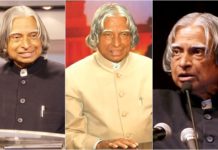A Brief History Of Indian Cinema
Can you believe it has already been around 2 centuries since the start of Indian cinema? It all started in 1896 when Lumiere Brothers screened their first films in Mumbai (previously known as Bombay) which were filmed by them. Now let’s get into a brief history of Indian cinema.
This event sparked a passion in Harishchandra Sakharam Bhatavdekar, you may remember him by the name Save Dada. He was a still photographer at that time and when he watched the movie in Bombay, he got so interested that he decided to order a camera from England. This was the beginning of the brief history of Indian cinema. The first-ever film shot in India was in Hanging Gardens in Mumbai. It was a very simple shot of wrestling match the movie was named “The Wrestlers.” Save Dada gave everyone a ray of hope that cinema could also be brought to India when this movie was first screened in 1899. This is the first-ever motion picture in the brief history of Indian cinema.
The Beginning of Bollywood
We all know who can be called the father of Indian cinema. It is none other than Dada Saheb Phalke who is known to have released the first-ever feature film in 1913. It was a full-length feature film by the name “Raja Harishchandra.” the most spectacular part of this movie was that it was a silent film. Although it did not have the power-packed dialogues that our recent movies have, it created a huge impact on the audience, so much so that it became also the first-ever Indian film to be screened in London in 1914. No doubt it was a commercial success. Dadasaheb played an all-rounder in producing, directing, writing, editing, working as a cameraman, art director as well as makeup artist. This was a very important stepping stone in the brief history of Indian cinema.
- Also Read : Places To Visit In Goa For Couples
Dadasaheb Phalke later went on to supervise and manage the production and direction of 23 more films between the year 1913 and 1918. But unfortunately, the beginning of Bollywood was not as fast-paced as that of Hollywood. But the film industry had excited many new production companies to try their luck in the early 20s. In those times, the movies generally revolved around mythological and historical stories. The adaptations of Ramayana and Mahabharata were what producers opted for as that attracted a lot of viewers but Indian audiences also wanted to see more of Hollywood films, especially for its action.
The Rise of the Talkies
In the brief history of Indian cinema, talkies came into the picture since 1931. The first sound film ever screened was “Alam Ara” by Ardeshir Irani. This was obviously a major turning point for the Bollywood industry. The music director of the movie was Phiroz Shah and the first-ever song that was recorded was ‘De de khuda ke naam par’ and given voice by W.M. Khan.
After this, people started investing more in this field and several production companies established which resulted in an increase in the number of movies released. In 1931 a total of 328 films were made which was triple to the number 108 films made in 1927. This was the time when people started building huge movie halls and the rush of the audience was also significant.
You can remember many film personalities like Debaki Bose, S.S. Vasan, Nitin Bose, chetan Anand who emerged during the 1930s and 40s.
Growth of Regional Movies
The first-ever Bengali feature film released was “Nal Damaynti” in 1917 which was produced by J. F. Madan and he decided to cast Italian actors in the main roles.
The first South Indian silent feature film got screened in 1919. The name of the movie was “Keechaka Vadham” directed by R. Nataraja Mudaliar of Madras (Chennai). The first Tamil talkie, “Kalidass” was released in Madras on 31st October 1931. Apart from these, there were other regional movies which came into the limelight around this time.
Birth of a New Era
The Second World War led to a rapid decline in a number of movies released. 1947 witnessed a prominent turn in the Indian film industry. Many exceptional filmmakers like Satyajit Ray and Bimal Roy decided to make more realistic movies which would put light onto the miseries and sufferings of the lower class people in their daily lives. Mythological and historical movies became outdated and movies with a social message and themes like prostitution, polygamy and other evil practices started attracting audiences.
- Also Read : Top 10 places to visit in Jaipur
Who can forget the error of the 1950s and 60s? In the brief history of Indian cinema, this Era is termed as the “Golden Age” which witnessed the rise of some unmatchable and spectacular actors like Dilip Kumar, Raj Kapoor, Guru Datt, Meena Kumari, Nargis, Madhubala, Nutan, Dev Anand, Waheeda Rehman and others.
The Rise of the Masala Movies
The 1970s was the beginning of the Masala Movies when things started to get less serious and more entertaining. The rise of the actors like Hema Malini, Dharmendra, Rajesh Khanna, Sanjeev Kumar, Amitabh Bachchan and others made these movies bigger hits in the box office.
The one director of this period who will always be remembered and praised is Manmohan Desai. We can be rightfully called the father of Masala Movies. He wanted people to forget their miseries through these movies, where fate was kind to the hero and everything is sorted in the end.
The 1990s witnessed a rush of the fresh batch with new faces and fresh energy. Shahrukh Khan, Salman Khan, Aamir Khan, Madhuri Dixit, Juhi Chawla, Chiranjeevi and many others ruled the industry. The stories became more romantic and family-oriented and they brought in a new technique of acting which people really enjoyed.
Indian cinema and Indian actors have received international recognition and appreciation. A.R Raman received to Academy Awards for his music in the movie Slumdog Millionaire in 2008. What is surprising is the overseas collection of Indian movies which has started contributing a major part in the Bollywood box office. This is a brief history of Indian cinema. Entertainment has always been the main keyword of Indian cinema and it is serving that purpose really well.
Also Read
Top 10 places to visit in Nainital | Best time to visit Nainital



























